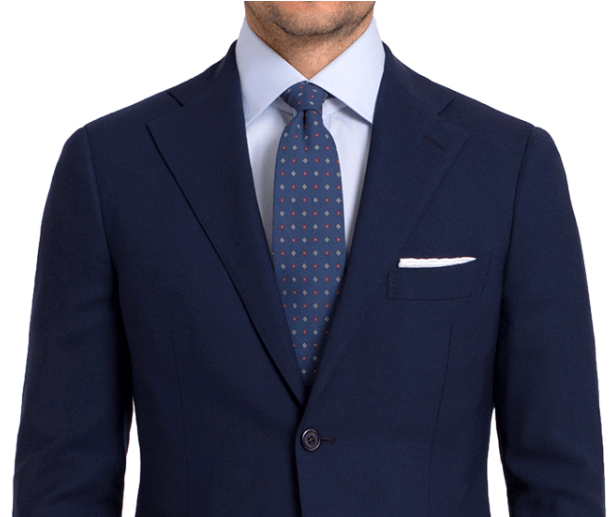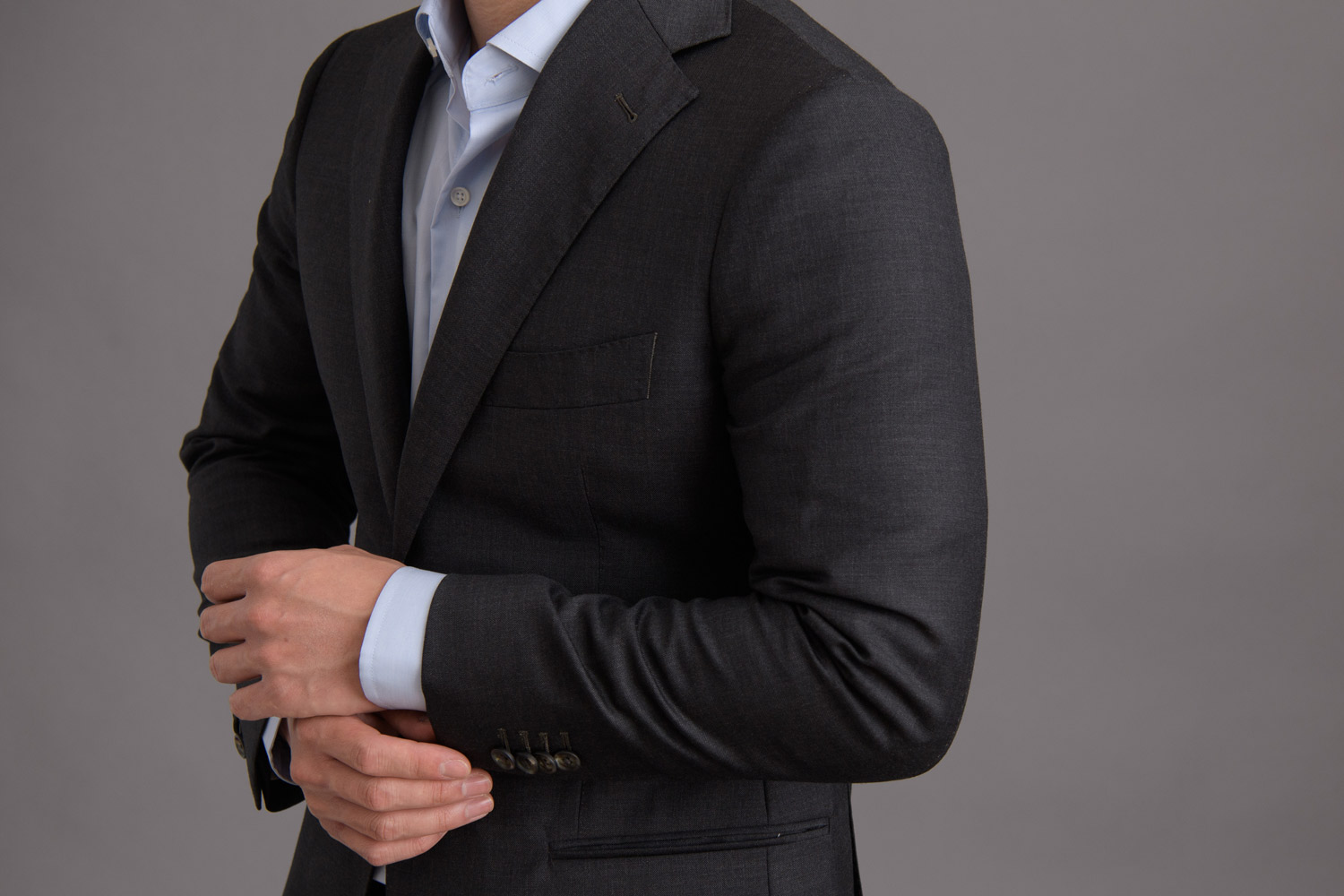How It Should Fit: Close to the biceps, tapering slightly to the cuff

An example of a good jacket Bicep Width fit.
When standing upright with your arms at rest, the jacket sleeves should hug your biceps, but not so tight as to cause creasing, twisting, or pulling at the upper arms. The rest of the sleeves should taper gradually down to the cuff such that they do not “stack” or bunch at the elbows or forearms.
Whether you prefer a slim modern fit or a looser traditional one, there should be enough room in the upper sleeves to allow for good range of motion when you reach forward. An added benefit of having more room in the upper sleeves is that it creates the appearance of larger upper arms and tapers more naturally to the end of the cuff.
Bicep Width Too Small: Fabric gathers along the arms

An example of a jacket Bicep Width that is too small.
There are two common signs that the jacket’s Bicep Width may be too small: horizontal tension lines on the upper sleeves and fabric stacking at the elbows. A jacket Bicep Width that is too small can cause tightness at the armpits and eventually tears at the elbows because of the tension from the fabric hugging the body too closely without any room for movement. Even if the rest of the jacket fits well, the overall fit will appear too small and will likely be uncomfortable.
Gentlemen who prefer a fashion-forward style may want a very slim fit that highlights their biceps. Keep in mind that jackets are already meant to fit closer to your body without optimizing for mobility as much as a shirt does. If the fit is too slim it may look great when your arms are at rest but may feel tight when you reach forward. If this happens you should consider widening the Bicep Width a bit.
Bicep Width Too Large: Baggy upper sleeves

An example of a jacket Bicep Width that is too big.
A Bicep Width that is too large will hang around the arms and make one’s biceps look unflatteringly small inside the sleeves. Even if you prefer a classic or more traditional fit, the sleeves should outline your arms rather than appear boxy or loose. There should be no folds of excess fabric around the biceps or elbows when your arms are at rest.
Jacket vs. Shirt Bicep Width Measurements: Why are they different?
You may notice that your jacket’s Bicep Width measurement is smaller than that of your shirts. That’s because shirts are designed to offer range of motion when you’re going about your daily activities, while jackets are designed to offer a trim appearance when your arms are at rest. Your jacket is meant to fit closer to your body and not necessarily provide a wide range of motion, whereas your shirt must leave more space around your body so you can move freely.
Your preference for either a slim or relaxed fit in shirts and jackets will determine just how much these measurements differ. Ultimately the two garments will fit and measure differently in the chest area because they’re designed for different purposes, but they will fit you the way their intended purpose requires.
Local Tailoring: Can a tailor adjust my jacket Bicep Width?
Yes. A tailor can widen the jacket Bicep Width by about 0.30” (0.60” in circumference) maximum, and tighten it up to .50” (1.00” in circumference) without affecting the jacket’s structure noticeably. A 0.30” adjustment goes a long way with this dimension so make sure not to over-adjust.
If you need a second opinion on how to adjust your tailored jacket size for a better fit or would like to request a remake for more dramatic changes to the Bicep Width, we recommend submitting a Fit Advice Request to get custom size recommendations for a potential remake.
More information on how Proper Cloth garments can be altered by a tailor.
- How Jacket Sleeve Opening Width Should Fit How It Should Fit: Slight taper from elbow to cuff When standing upright with your arms at rest, the jacket sleeves should be slim enough to look fitted...
- How Jacket Midsection Width Should Fit How It Should Fit: Gently hugging your torso A well–tailored jacket should lightly hug your midsection and follow the curve of your back in a smooth, uninterrupted drape....
- Slim Fit Dress Shirts Whether you’re particularly skinny, a star athlete, or an average person, you’ve probably noticed that when you wear a dress shirt it fits just a bit looser than...
- Cuff Design Options: Dress Shirts Proper Cloth has a range of cuff options to choose from: one button, two button, French cuffs, casual unfused cuffs, etc. Details on each cuff style available are...